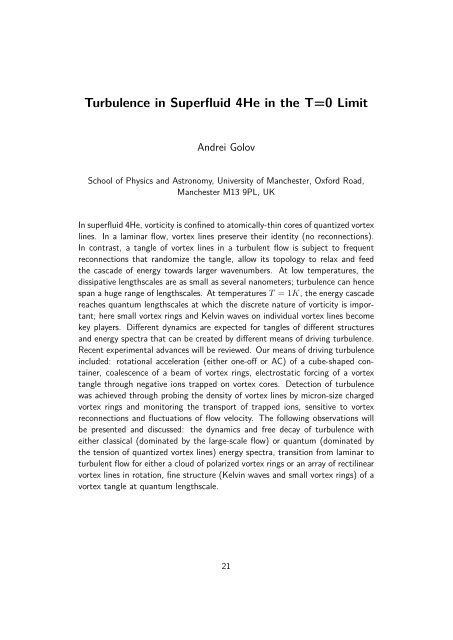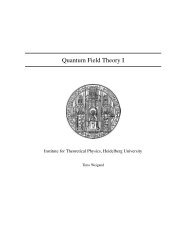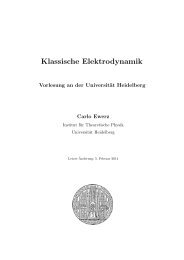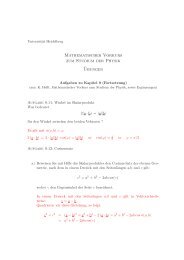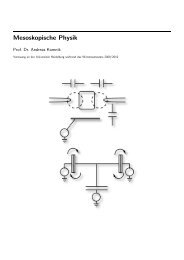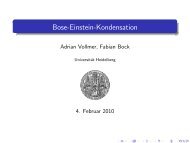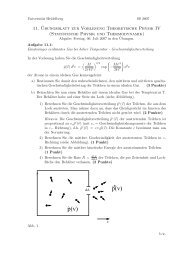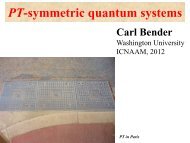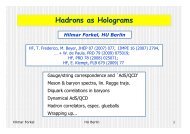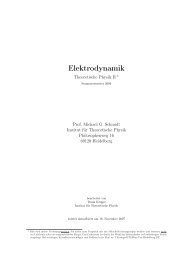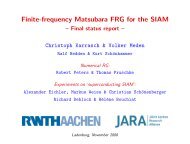Turbulence and Bose Condensation - Institut für Theoretische ...
Turbulence and Bose Condensation - Institut für Theoretische ...
Turbulence and Bose Condensation - Institut für Theoretische ...
Create successful ePaper yourself
Turn your PDF publications into a flip-book with our unique Google optimized e-Paper software.
<strong>Turbulence</strong> in Superfluid 4He in the T=0 Limit<br />
Andrei Golov<br />
School of Physics <strong>and</strong> Astronomy, University of Manchester, Oxford Road,<br />
Manchester M13 9PL, UK<br />
In superfluid 4He, vorticity is confined to atomically-thin cores of quantized vortex<br />
lines. In a laminar flow, vortex lines preserve their identity (no reconnections).<br />
In contrast, a tangle of vortex lines in a turbulent flow is subject to frequent<br />
reconnections that r<strong>and</strong>omize the tangle, allow its topology to relax <strong>and</strong> feed<br />
the cascade of energy towards larger wavenumbers. At low temperatures, the<br />
dissipative lengthscales are as small as several nanometers; turbulence can hence<br />
span a huge range of lengthscales. At temperatures T = 1K, the energy cascade<br />
reaches quantum lengthscales at which the discrete nature of vorticity is important;<br />
here small vortex rings <strong>and</strong> Kelvin waves on individual vortex lines become<br />
key players. Different dynamics are expected for tangles of different structures<br />
<strong>and</strong> energy spectra that can be created by different means of driving turbulence.<br />
Recent experimental advances will be reviewed. Our means of driving turbulence<br />
included: rotational acceleration (either one-off or AC) of a cube-shaped container,<br />
coalescence of a beam of vortex rings, electrostatic forcing of a vortex<br />
tangle through negative ions trapped on vortex cores. Detection of turbulence<br />
was achieved through probing the density of vortex lines by micron-size charged<br />
vortex rings <strong>and</strong> monitoring the transport of trapped ions, sensitive to vortex<br />
reconnections <strong>and</strong> fluctuations of flow velocity. The following observations will<br />
be presented <strong>and</strong> discussed: the dynamics <strong>and</strong> free decay of turbulence with<br />
either classical (dominated by the large-scale flow) or quantum (dominated by<br />
the tension of quantized vortex lines) energy spectra, transition from laminar to<br />
turbulent flow for either a cloud of polarized vortex rings or an array of rectilinear<br />
vortex lines in rotation, fine structure (Kelvin waves <strong>and</strong> small vortex rings) of a<br />
vortex tangle at quantum lengthscale.<br />
21


